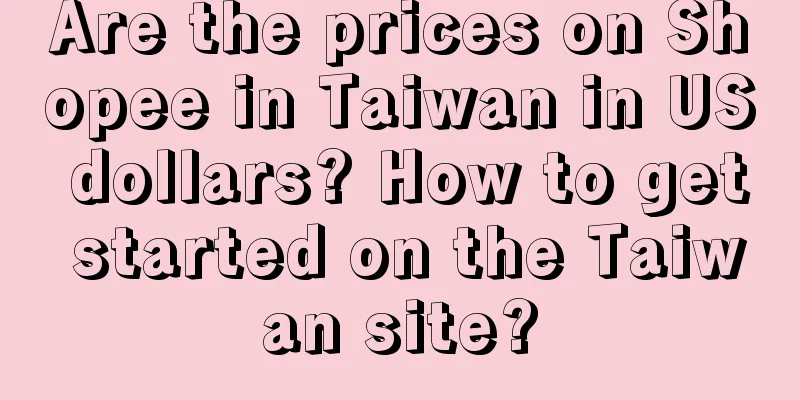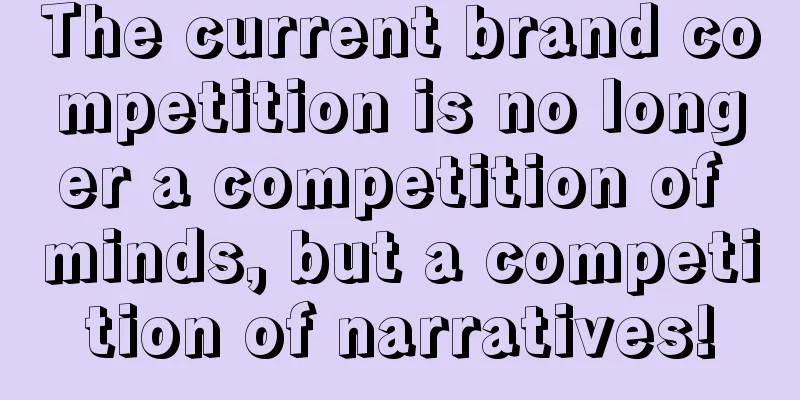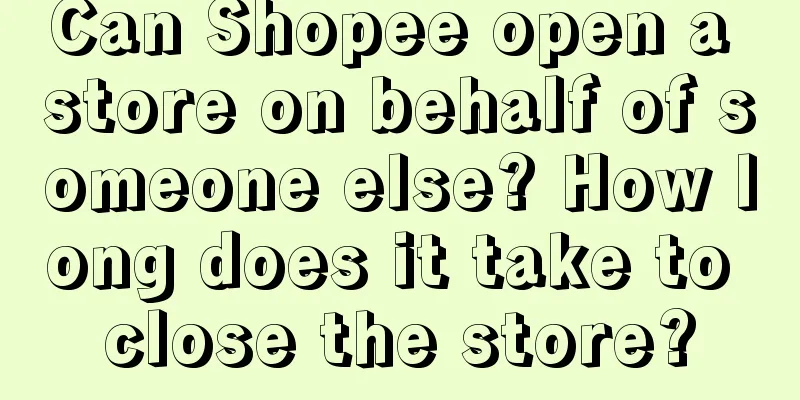Learn to think big first, then start small

Previously, a reader talked to me about whether his entrepreneurial venture was reliable or not, and he briefly talked about his product. The user path is roughly like this: users choose to buy blind boxes of electronic products, which basically contain digital products and various big-name products. This is to take advantage of the speculative psychology. Users can draw high-value products with the least money. If they draw something they don’t want, they can exchange it for platform points, which can be used to exchange for the products they want in the platform mall. He asked me what I thought of this startup project, and I said, excuse me, it has no value. I gave three reasons: 1) You have not created value in the delivery logic of this electronic product blind box. Since you are not involved in the production process, you cannot create highly scarce and irreplaceable products. 2) Due to the relationship between cost and utility, in the long run, the probability of a user winning the product he wants is almost equal to the price he paid directly. Considering that users buy blind boxes for a long time (in fact, users are not that stupid), you still haven't created any user value. 3) The most important point is that there is no technical barrier to your business. It is just a rule. If it becomes popular, large platforms can come in and do this at any time. The last point is particularly important, that it is difficult to build a barrier for this business. Even if you take a step back, this kind of demand does not require the development of an App. You can just buy a bunch of electronic products and try it out with the official account. This friend raised another question about the first point that they did not participate in manufacturing. That is, the big e-commerce platforms did not participate in manufacturing. Did they not create value? I said that they did. They reduced transaction costs and promoted transactions. This certainly created value. In the end, I had a very sincere conversation with this friend. Starting a business is very difficult. Most markets are in a state of equilibrium, and the value transfer is stable. It is actually very difficult to break the original value and establish a new value network. This once again shows that starting a business is very difficult. Basically, if the logic is wrong, there is no chance of winning. To put it bluntly, it is a question of how to lose. If the logic is right, you may win. But in fact, the probability of winning is still very low. 1. The wrong logic will only make things worse.In fact, some basic thinking models can help us eliminate many wrong options. For example, an investor I admired very much summarized entrepreneurship into six life-threatening questions. In fact, my six job search questions are also copied from his ideas. He said that every entrepreneur should think about who you are (family and education), where you come from (knowledge, experience, resources), where you are going (company vision), why you want to go there (company mission), and how you can go there (how to gain competitive advantage in endowments and resources, see yourself clearly, and see your competitors clearly). Think about this clearly. In fact, it is to think about the big logic. Finding a job is a logic. Who are you (family of origin and education experience), where do you come from (knowledge, experience, resources), where are you going (which company do you want to work for), why do you want to go there (the reason you chose this company), and what makes you able to go there (work experience, job search advantages and disadvantages, see yourself clearly, see your opponents clearly) Let me tell you another example. In 2015, a friend of mine wanted to start a business to make money online. He said that businesses need to advertise, and students have no money but need to make money by watching ads. If I give students money to watch ads, then these two needs are connected. One is that businesses need to advertise, and the other is that I give students money to watch ads. In this way, I can give part of the advertising money from businesses to students. This demand is connected. Do you think there is something wrong with this idea? Of course there is! The merchant’s demand is not that someone needs to watch the advertisement, but that people with demand need to watch the advertisement and then come to him to buy his product. So this demand is not matched at all. Secondly, think about it from the perspective of the six questions of life and death. Where do you come from (knowledge, experience, resources) and why can you go there (competitive barriers, core resources) and why can you go there (how to win). In fact, if you think about it, you will know that this opportunity does not belong to you. You can check the resume of Tan Siliang, CEO of Qutoutiao, such as his position as the head of Shanda’s advertising business, and you will know why the opportunity belongs to him. Look at the stock price of Qutoutiao, and you will know that this kind of online earning product has no threshold. In fact, it is the same for everything we do: if the logic is wrong, there is no chance of winning. So everyone should think more and understand that macro strategies and underlying thinking greatly determine your success and value. Don't just follow others, but think critically and think about whether the reasoning is reasonable and whether the conclusion is valid. There are too many things in our lives that are wrong in logic if we think about them carefully. They waste too much of our energy. I remember there was an article in WeChat Moments where Liu Qiangdong said to his subordinates, "I invited you here not to ask questions, but to solve problems." I saw many bosses in WeChat Moments forwarded this message, including the guy who wanted to make money online. So the question is, why is this sentence suitable for Liu Qiangdong but not for you? It's because Liu Qiangdong's resource endowment is different from yours. CEOs like Liu Qiangdong and Lei Jun are a resource pool in a sense. He sets goals and gives resources to get results. In general, the relationship between business owners and employees is still the relationship between employers and employees. If an employee can handle a core link of the company, then why should he be your employee? Generally speaking, most employees are not as capable as their employers. Let me give you a positive example. Mr. Li Yunlong from Growth Research Institute operates his own new media. Many companies think they are not capable enough and pay someone to operate on their behalf. Then the question is, if he can really make your company popular, he will either start his own company to operate the business, or he will work in a large company. Why would he be your second party and suffer all your torture to find a father? Even if you want to find such an operator, there are still many issues you need to consider clearly:
These are things that you can only think clearly about. After all, in management, you control him, not him controlling you. Otherwise, it becomes that this person has to persuade you to do something. It is best not to have different frequencies of communication at work, that is, you persuade an "outsider" or be persuaded by an "insider" at a different frequency. Cognition is the real competitiveness, and other production factors can be constructed. Basically, if the logic is wrong, there is no chance of winning. If you make mistakes based on the wrong logic, you will only make more mistakes. 2. How to think big and start smallThe previous stories are just appetizers. I, myself and the people around me, have all experienced too many things that we did without thinking clearly. I am eager to share with you that the dimension and height of thinking are very important. Even if you are a small grassroots staff, it is very important to think about your work from a larger value scale. The macro determines the micro, and a small tactical victory does not determine a big strategic failure. Cognition is the first priority for anyone. If you improve your cognition from a big perspective, the scope of your vision will be more profound. Small tactical victories cannot determine strategic success or failure. I remember the key points Fan Bing summarized when reviewing Didi's victory over Uber. On a macro level, Didi received investment from Alibaba and Tencent, which blocked all traffic from Uber's Chinese Internet ecosystem. It's not that Uber can't get traffic. It's that it can't get traffic through places like WeChat, Alipay, Weibo, video sites, etc. But on a micro level, Uber is a small team, and city managers, data analysis, etc. are much better than Didi's team in bilateral transactions in some cities. But small tactical victories cannot determine strategic success or failure. So it is important to think clearly about the big logic and macro strategy. Next, let’s move on to the company’s business layer. Recently, I have been helping some companies with growth consulting and communicating with some friends, and I have discovered the most important issue: No one has thought through the big logic of business (here we deliberately avoid talking about strategy, which is vague and difficult to reach consensus on). The Art of War by Sun Tzu says that a good warrior wins first and then seeks battle. This means that when launching a battle, you should first occupy the high ground of potential energy, which makes it easier to win. In the above example, I think the most important thing for a leader is to put his subordinates in a place with high potential energy, that is, to create momentum. Plan carefully before you act, and know when to stop before you gain. This means that if you plan accurately and carefully before you act (you need to think through the big logic), and know when to stop (know the end of the competition and when to quit), you will gain something. In fact, our ancestors have already made it very clear how important planning and top-level design are. My good friend Mr. Li Yunlong has encountered many similar problems. Once when he was doing a video call, he said that many CEOs of companies are particularly interested in traffic. Every time I find a lecturer who teaches traffic fission and traffic skills, I am very excited. I am very happy about how to get traffic and fission customers. When I asked Mr. Li Yunlong about growth, I was also talking about how to get traffic. In fact, this is not unimportant. It is not about focusing on traffic skills. Even if you pay attention to traffic, you should consider traffic from a strategic level, not from a technical level. The leader requires that you consider an environment that can continuously generate skills. Because any skill will be lost over time, the marginal effect will decrease, and it is unlikely that you will step on the bonus every time you use a skill. It is not true that the CEO spends all his time studying traffic. Rather, after the business is running, the CEO mainly thinks about how demand is changing, what new demands, new markets, new users, new channels, and new technologies are changing, broadening the company's survival status and expanding the company's current transaction channels. This generates growth momentum in structure. Typically, businesses grow within the established pipeline shown in the above diagram. Usually, the company's internal staff optimizes the system and proposes strategies under the established transaction pipeline. Can these generate growth? Of course they can. But it is impossible to generate extreme growth because the transaction pipeline has a certain ceiling. If the pipeline needs to be expanded, the structure needs to be modified. The larger dimension of operation determines the constraints of the transaction pipeline. Only by optimizing from a higher dimension can greater and longer-term business growth be generated. Different thinking dimensions will produce different growth Insight into changes in external systems, mainly time and external environment conditions, the CEO must understand these changes and adjust the business accordingly. For example, demand will change over time. For example, the longer some recommended products are used, the more prominent the information cocoon effect may be. You must solve it in the time dimension. In addition, demand may also change with the changes in the external environment. For example, if some new elements are added, such as mobile payment, then all our businesses may have to be adjusted accordingly. For example, the competitive situation, such as some differentiation strategies of competitors, or they launch a new product, how do we adjust our products to respond? For example, the supply and demand relationship will also affect the decision-making. For example, if there was a surplus of supply before and then it turned into a shortage of supply, then many trading roles will have to be re-evaluated. For example, if the country issues policies and regulations, how do we adjust our strategy? These are all high-level thinking dimensions. The CEO needs to think about how the core capabilities can establish barriers in the industry and ultimately cross the fluctuation cycle of the industry. Finally, I will give an example to explain what trading channels and system strategies are, as well as the impact of the larger external environment on them. I believe everyone still remembers shared bicycles in 2016. If we only look at the shared bicycle system, then it needs to meet the profit under this system to survive. He must adopt lean management, but if Meituan and Alibaba take over, he will become a customer acquisition channel. Then, in this survival state, his reference system will become whether the cost of getting users to download the App + activate payment is appropriate, and whether the cost of promoting the public welfare image of the corporate brand as citizen welfare is appropriate. The same business expands different survival states, and the survival conditions are different. The shared bikes fully demonstrate the importance of looking at the big picture. Seeing the big picture helps us know when to quit, rather than clinging on until it is worthless. Winning the final game can certainly demonstrate our own ability, but quitting when it is time to stop is also a kind of winning ability. How to achieve a big picture perspective? I think there are three ways: Think upwards about the "end game", think downwards about the "essence", and make scientific deductions. The first two are transformed by management science into: what will my business be? and what exactly is our business? 1.1 Thinking Upwards to the “End Game” Before doing any business, and what everyone is doing at present, you must continue to think about these questions: 1) What is the future development trend of my industry and where is the ceiling? How big is the industry, how many players will there be in the end, and what conditions determine the number of players. 2) What changes are happening in my industry at 10 times the speed, and how will it affect me? Which transaction factors will change 10 times in the future, and which positions do I need to plan in advance? 3) What are my core capabilities? How big can they support me? What are the core elements of the transaction pipeline I have built? What kind of user value can it provide? How many users can these user values attract? 4) Does my business have a clear path? What will the future competition landscape look like? How will the players fight each other? What are the key nodes? What are the key battles that I must win? When will they appear? 5) Which companies will have cross-border impacts on us? Which node in the value chain am I at, what alternatives do my users have, and which other trading nodes are easy to enter my market. This is a dimensionality reduction attack on them. 6) What is my moat? Where is my long-term accumulation? How to prevent other companies from dividing my users? Which links do I need to invest resources in the long term in the business development? 1.2 Thinking Downwards to the Essence We need to think about what the transaction model is like and how we view this transaction. Because any product has its own user value proposition. For example, Didi Taxi was a platform that connected passengers and taxi drivers, but the supply of taxi drivers would soon reach a bottleneck. However, if we see that Didi Taxi is actually transporting users from point A to point B, then Didi Chuxing is derived. In this way, any solution that satisfies our needs to help users move physically is acceptable. Our solutions and transaction flexibility have undergone qualitative changes. 1) Who are my target customers? How do they make decisions? Thinking about the transaction model can show whether our user base can be expanded and at what levels we can provide users with more value. 2) Have I thought about the nature and underlying logic of the industry? Looking down is also for the purpose of looking up. In fact, the bottom-level thinking and top-level thinking are two sides of the same coin. For example, one of Meituan Waimai’s peers is called Meishihui. They entered this track in 2010. By 2013, they had about 10,000 to 20,000 orders in Beijing. At that time, there was a Grubhub in the United States. When it went public, it was about 3 billion US dollars and had about 200,000 orders. So how you view the bottom-level transactions will greatly affect your estimation of the ceiling. 3) Think about industry solutions from scratch and avoid doing what everyone else does Taking the truck product just released by Tesla as an example, he explained the logic behind Tesla's manufacturing of trucks: "We just thought: What do people want? They want reliability. They want low cost. They want driving comfort. So we thought again, what exactly is a truck." "In other words, if you want to create or innovate, start with a blank slate. Don't accept any idea, convention, or standard just because everyone else is doing it. For example, if you want to build a truck, it must be able to reliably transport goods from one place to another. The only things that must be followed are the laws of physics. Everything else is negotiable, even government regulations. Just remember that the goal is not to reinvent the truck but to build the best truck, whether it resembles the original or not." 1.3 Scientific deduction In fact, for thinking upward to the "end game" and thinking downward to the "essence", we need to use scientific deduction logic, which is the same as our demand analysis and strategic planning. In fact, the analysis idea of focusing on the big picture is the same idea. Thinking upward to the "end game" and thinking downward to the "essence" point out the direction, and scientific deduction tells us the method of deduction. Elon Musk explains what the scientific method is and then summarizes it into 6 steps: 1. Ask a question. 2. Collect as much information and evidence as possible on this issue; 3. Develop possible axioms based on the evidence and try to calculate the probability that each axiom is true, that is, whether these axioms can be established; 4. Draw a cogent conclusion: Are these axioms correct? Are they relevant to the question you are asking? Do they rigorously lead to the conclusion? What is the probability that the conclusion is true? 5. Try to disprove this conclusion. Find some other people's refutations of this conclusion to further help you break the conclusion; 6. If no one can deny your conclusion, then you are probably right, but you are not necessarily absolutely right. Elon Musk said: "This is the scientific method, and it is extremely helpful in figuring out a lot of tricky things." Musk said that most people do not use the scientific method. They will ignore arguments that do not agree with their own views and become stubborn. "I say it is right, so it is right," not because it is objectively right. The overall idea, whether it is about demand or competition, is to think about some facts, and then assume that this fact is true to derive solutions. 3. Think about the growth flywheel in your businessIn fact, you are thinking about compound leverage and barriers. The reason why I am talking about the growth flywheel again is that I was recently studying blockchain, and I found that Coinbase, which is currently listed, mentioned the growth flywheel in its prospectus. When I was doing consulting, I also asked many company decision makers, "Can you describe the growth flywheel of your product?" In addition to unilateral transactions like Starbucks, the supply chain is its own logic. (Whether there is a flywheel in the unilateral market is currently questionable. We will temporarily put aside the dispute. Interested readers can add me on WeChat to communicate.) Bilateral or multilateral markets usually have flywheels. For example, Uber has more drivers, which shortens the response time. Shorter response time attracts more users and increases the order density of the unit. In summary, it is a more and more logic because there are more. 3.1 Why should we think about the growth flywheel? Because most of our businesses still need leverage, and this growth flywheel is a form of leverage, but it is not the only form. However, the output of the previous round is the input of the next round, which is obviously a very perfect loop, so I must hope that my business can form this loop. Otherwise, my business will be a linear growth form, so it is very important to see clearly and find the flywheel. 3.2 Growth Flywheel is also a Thinking Barrier Because usually a flywheel is a cycle that you invest resources in. If it can rotate, it shows where your core resources are invested. In theory, it can rotate. This kind of bilateral or multilateral flywheel has a certain degree of exclusive logic. Then it is difficult for other people to be pulled away with similar supply and demand. Then such a flywheel and resource investment means the accumulation of barriers. So thinking about the growth flywheel itself is thinking about barriers. Assuming that your flywheel has no barriers, then this means that another business party can also rotate a flywheel, but in fact we will find that there are usually only a few leading companies in the bilateral market. This proves the existence of barriers. Thinking about barriers does not necessarily mean that you have to think about them completely at the beginning. It is also a gradual iterative process, but thinking about the flywheel itself is a process of understanding the business and reading the industry. Don't let tactical diligence cover up strategic laziness. Cognition is the real competitiveness, and other production factors can be constructed. Basically, if the logic is wrong, there is no chance of winning. If you keep doing it on the wrong logical basis, you will only make more mistakes. Finally, how can we simplify the above two sentences in plain language? Let’s quote Zeng Guofan’s explanation of strategy in Feng Tang’s "Inheritance": think big and start with small. Author: Arun's Growth Research Institute Source: WeChat public account "Arun's Growth Research Institute (ID: arungrowth365)" |
<<: How can the marketing customer acquisition team be data-driven?
Recommend
Can Shopee's delivery time only be set to 2 days? What should I pay attention to when shipping?
In order to ensure the quality of service for cons...
How to view and deal with slow-selling products on Amazon?
After we opened a store on Amazon, we need to cons...
The anchor's monthly sales are millions, and the 10 billion card industry has become popular in the live broadcast room
This article seizes on the current booming card ma...
Detailed explanation of the operating costs of the three e-commerce giants: Where does the pressure on merchants come from?
When merchants complain about "only refunds&q...
Sold 100 million in 4 hours, what’s Dong Yuhui’s next move?
As a new anchor, Dong Yuhui showed his ability to ...
Brand No. 1: 24 business rules
To build a brand, you also need to understand busi...
With Luckin Coffee’s 10,000 stores, is Mixue Ice City getting an enemy or a comrade?
How did Luckin Coffee do it from being forced to d...
How do I use the Amazon Refurbished link? How long is the new product period?
For Amazon merchants, they need to pay attention t...
Do I need a video to open an Amazon account? What is it for?
If you want to join the Amazon platform, the requi...
With so many people flocking to video accounts, how can car brands rely on “acquaintances” to operate?
In the wave of digital marketing, video accounts, ...
5 million likes hits are booming, but Douyin no longer has the miracle of increasing fans
The fan growth list in April still maintained a &q...
Will Amazon's 7-day promotional prices affect the next time? What are the rules?
When shopping on Amazon, a cross-border e-commerce...
What is the traffic on Amazon? Introduction to the four major traffic types
As the Amazon platform continues to grow, more and...
Does Amazon's global shopping include tariffs? How is the tariff calculated?
Purchasing overseas imported goods on Amazon is a ...
Douyin group buying: huge traffic "troubles" offline merchants
This article introduces several major problems tha...









